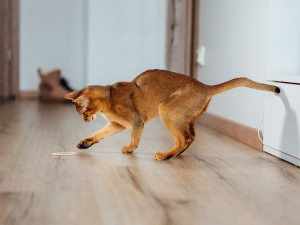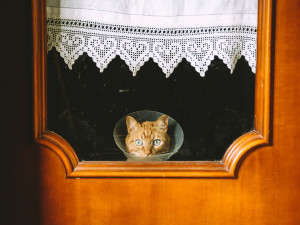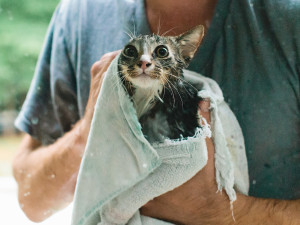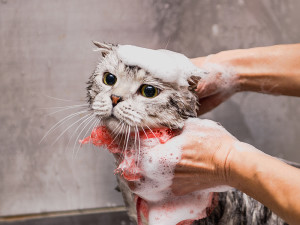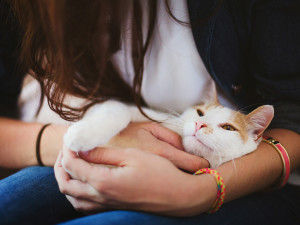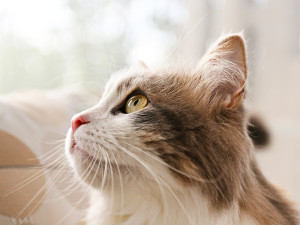Does My Cat Have Zits?
Paging Dr. Pimple Popper, DVM. Until then, a vet has tips on how to treat your cat’s acne.
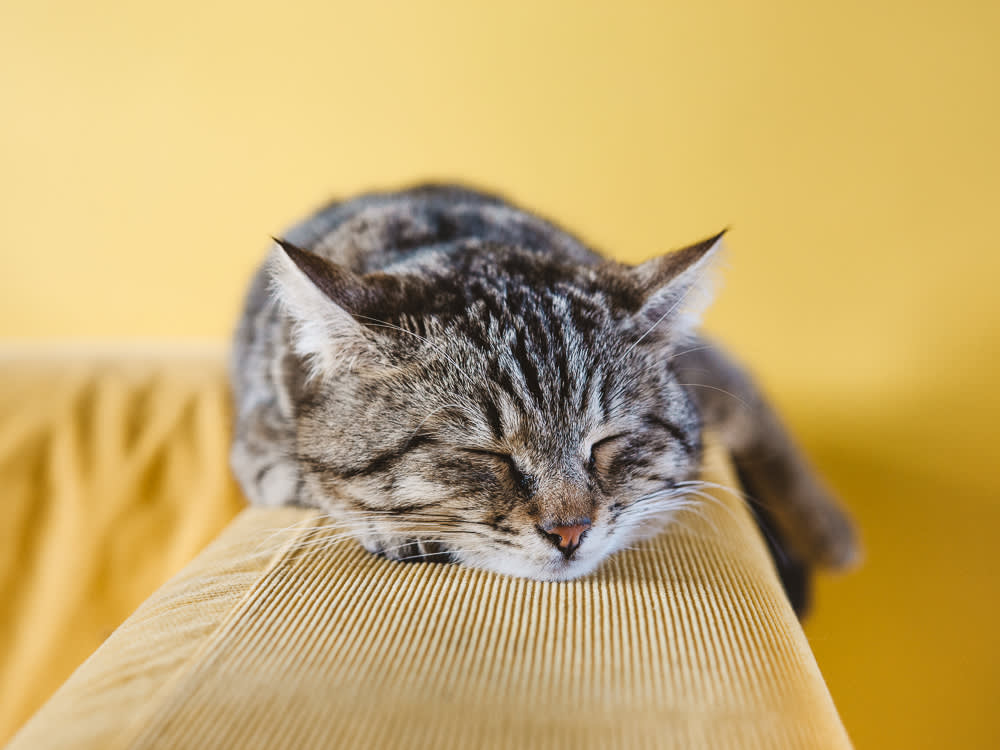
share article

Your pet wants you to read our newsletter. (Then give them a treat.)
Cats — they’re just like us. They love naps and they get acne. If your cat’s chin looks like the “before” picture in a late-night Proactiv commercial, read on for how you can treat the breakout before Dr. Pimple Popper, DVM, surfaces on Nat Geo one day.
What Does Cat Acne Look Like?
Feline acne can develop in a cat of any age, sex, or breed. It occurs primarily on the chin and around the mouth. Cats will typically develop comedones (blackheads) that can progress to papules or pustules (let’s just call them pimples), often accompanied by hair loss. The area becomes itchy and irritated, causing your cat to want to rub their face on everything (sure, they could also be feeling extra affectionate!).
What Causes Cat Acne?
A sole cause of cat acne has not been discovered. A mystery involving felines — shocking, right? The fancy term for feline acne is feline keratinization disorder, which means that their hair follicles are clogged with keratin, a protein found in skin. Factors that contribute to keratinization defects include poor hygiene, excessive sebum (oil) production, stress, underlying infection, a compromised immune system, or allergies.
So What Can You Do About Your Cat’s Acne?
First, keep in mind that feline acne is usually a cosmetic issue and that your cat can live a perfectly happy and healthy life without treatment. The strategy for tackling feline acne depends on the severity of the symptoms and often includes a combination of diagnostic tests, preventative measures, and routine maintenance.
Don’t Pop Those Zits
Listen to beauty influencers when it comes to popping pimples — don’t do it! Popping your cat’s pimples can leave an open wound, introducing bacteria or spreading an infection that’s already present. It’s unnecessary and cats would much prefer that you scratch their head instead of squeezing their pimples, trust me.
Keep the Affected Area Clean
Often, just cleaning the skin on your cat’s chin with mild soap and water is enough to keep acne in check. Your veterinarian may recommend cleansers with active ingredients like chlorhexidine, benzoyl peroxide, or salicylic acid. Be sure to use a product recommended by your veterinarian for cats. Humans have a lower skin pH than cats, so cleansers designed for people can make matters worse.
Clip the Hair Away
Occasionally clipping matted furopens in a new tab away can help improve hygiene, not to mention ensure that topical treatments are able to penetrate your cat’s skin effectively.
Replace Food and Water Bowls
Cat food bowlsopens in a new tab made of porous materials like plastic can harbor bacteria that exacerbate acne (and whisker fatigueopens in a new tab). Replacing them with ones made of non-porous materials like glass or stainless steel can be a quick fix. And wash them regularly to help prevent future breakouts.
Treat Secondary Infections
When your cat rubs their chin excessively, pimples can pop and become infected. Basically, any break in the skin creates an opportunity for infection to develop and can delay healing. Chronically moist areas create an ideal environment for yeast to overgrow. Your veterinarian may recommend medicated wipes, shampoosopens in a new tab, or systemic medications to treat secondary bacterial or fungal infections.
What if My Cat’s Acne Isn’t Improving?
If your cat’s acne is worsening despite treatment or is spreading to other areas on their face, your veterinarian may recommend skin tests to rule out other causes. Skin scraping can diagnose demodicosis, an infestation of Demodex mites that inhabit the skin and hair follicles. Cats infested with Demodex cati or Demodex gatoi will develop hair lossopens in a new tab, itching, and scabsopens in a new tab.
Demodex cati tends to affect cats with compromised immune systems, like cats who have feline immunodeficiency virus (FIV)opens in a new tab, feline leukemia virus (FeLV)opens in a new tab, or diabetes mellitusopens in a new tab. Demodex gatoi is more concerning because it can spread to other cats through contact. If multiple cats in your household develop itchyopens in a new tab, hairless patchesopens in a new tab, get them checked out as soon as possible.
Just like human acne, feline acne can be a frustrating condition to keep under control, but these tips (plus working out a maintenance strategy with your veterinarian) can help keep your kitty pimple-free and as cute as ever.

Dr. Alycia Washington, DVM, MS
Alycia Washington, DVM, is a small animal emergency veterinarian based in North Carolina. She works as a relief veterinarianopens in a new tab and provides services to numerous emergency and specialty hospitals. Dr. Washington is also a children’s book author and freelance writer with a focus on veterinary medicine. She has a special fondness for turtles, honey bees, and penguins — none of which she treats. In her free time, Dr. Washington enjoys travel, good food, and good enough coffee.
Related articles
![cat with cone after vet visit]() opens in a new tab
opens in a new tabDoctor’s Orders: Cat Vet Visits Are Essential
Get thy cat to a vet, even if it’s a struggle to get them out the door.
![A grey cat looking at a dish of fish]() opens in a new tab
opens in a new tabThe 5 Best Fish Oils for Cats
The next best thing to branzino, omega-3s support your cat’s skin, brain, joint, and heart health.
![cat wrapped in towel after bath]() opens in a new tab
opens in a new tabSelf-Care Sunday for Cats
How to bathe a cat, step by step.
![Cat being washed by a groomer]() opens in a new tab
opens in a new tabDoes My Cat Need a Professional Groomer?
If you thought your cat was a self-cleaning evolutionary marvel, you’re not wrong but...
![Three eco-friendly pet grooming products displayed in a collage.]() opens in a new tab
opens in a new tab11 Eco-Friendly Pet Grooming Products
Package-free brushes, plant-based wipes, certified-organic shampoos, and more.
![Cat enjoying laying on girl's legs and being cuddled]() opens in a new tab
opens in a new tabNew Research Aims to Reduce Cat Stress During Nail Trims
Plus, expert advice on how to trim your cat’s nails at home.
![Portrait of siberian cat with green eyes by the window.]() opens in a new tab
opens in a new tabHow to Prevent—or Treat—Cat Ear Infections
How to prevent an ear infection (and treat one if it’s too late).



